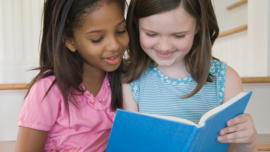2nd grade skills checklist: social & emotional skills
Success in second grade requires a child to be a much more independent learner than she was in first grade. Is your child ready?
Learning Stages
Second grade readiness checklists
Social & emotional development
- Appears comfortable and confident in self and abilities
- Respects others and the rights of others
- Follows classroom rules and routines
- Accepts responsibility for behavior and actions
- Uses materials appropriately and respectfully
- Makes independent choices of materials and activities
- Sustains attention to work over a period of time
- Works, plays and shares with others
- Interacts easily with adults
- Participates in group activities
- Shows empathy and caring for others
- Uses words to reason and resolve conflicts
- Seeks help when unable to resolve conflicts
- Uses words appropriately
- Completes tasks
Tips for parents to help children become socially and emotionally ready for second grade:
- Be a role model at all times, especially when you are in a conflict or faced with a difficult decision. Describe out loud the thought process you go through as you decide how to react to a situation.
- Praise your child for positive behaviors and making smart decisions, and point out small successes. ("That was a good decision to share the cupcake so you both got a little bit.")
- Give your child the opportunity to make choices; when your child is having a difficult moment, offer up two suggestions with consequences ("You can either leave your toys on the floor and choose to give up tonight's bedtime story, or you can pick up your toys and earn an extra ten minutes of storytime."). Abide by these consequences.
- Organize brief family study periods every night; make this habit a part of your family life so that it becomes something your child looks forward to as “together time.” Have plenty of study materials for your child so that this time is spent reading, writing or focusing, not on looking for something to do.
- When other adults are present, ask your child a question or two that you know they can answer and enjoy discussing (their favorite toy or the family pet). Listen to your child’s responses and ask further questions to encourage attention to detail (“What kind of ice cream did Francis drop on the floor?”)










